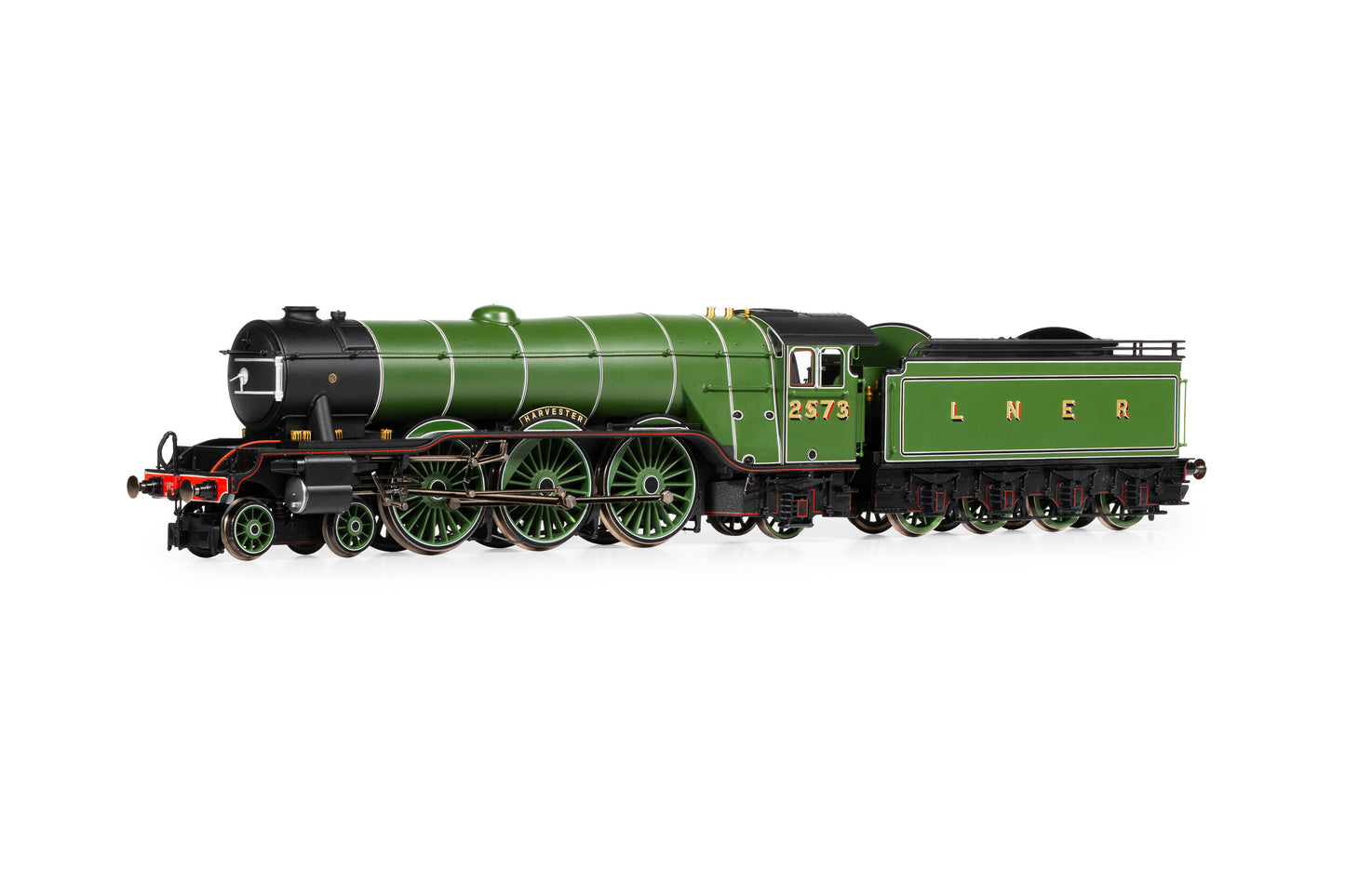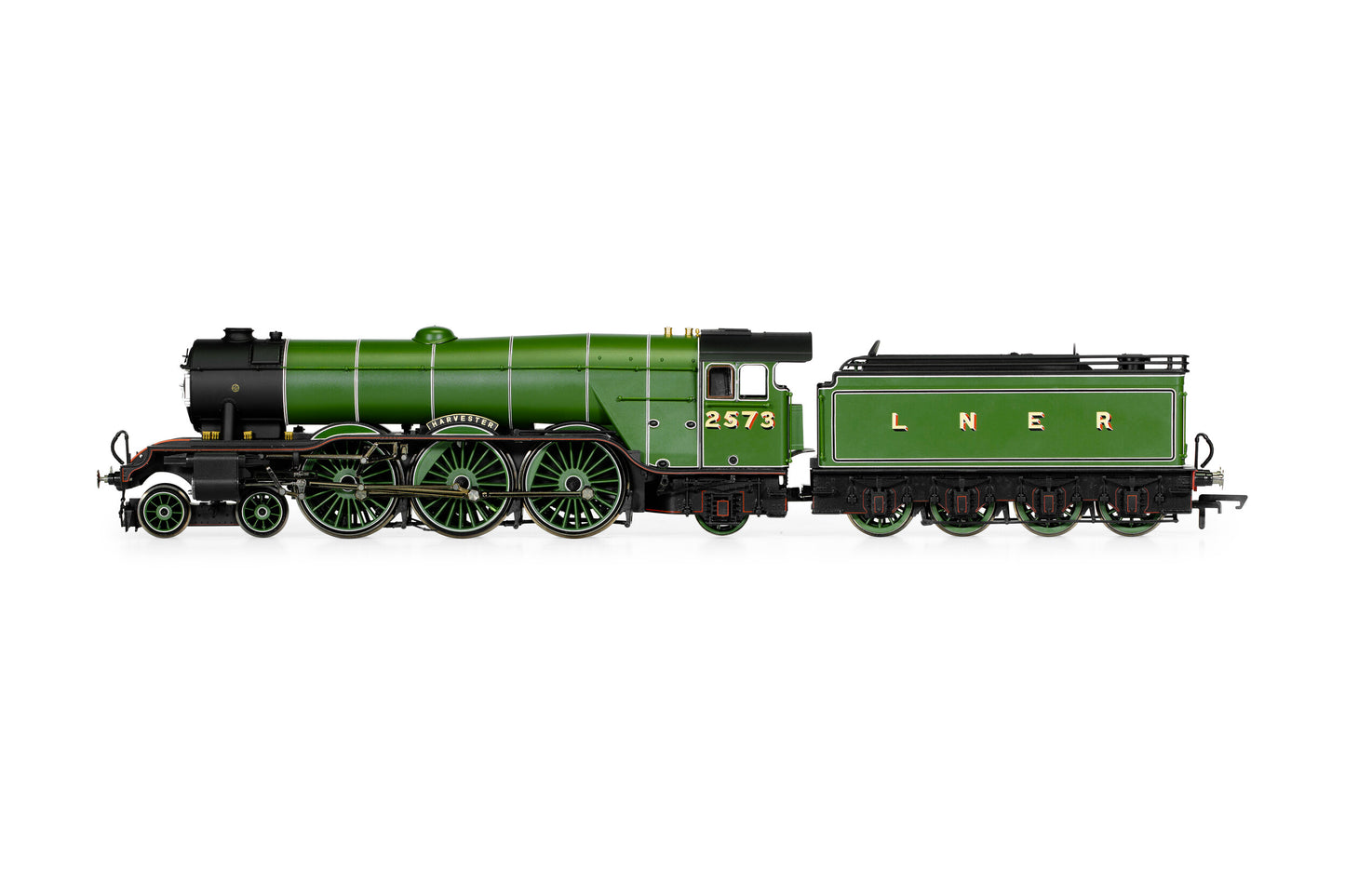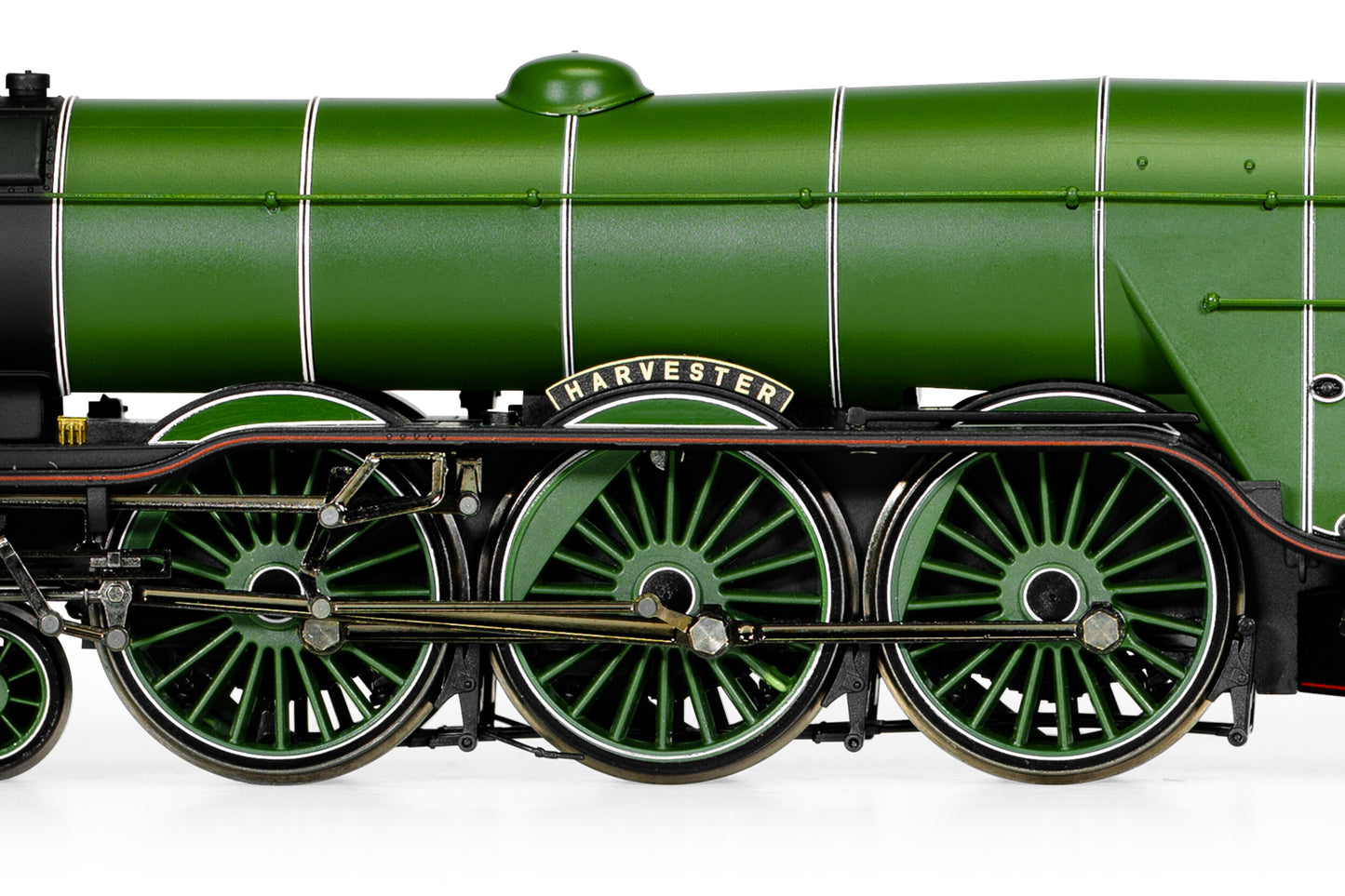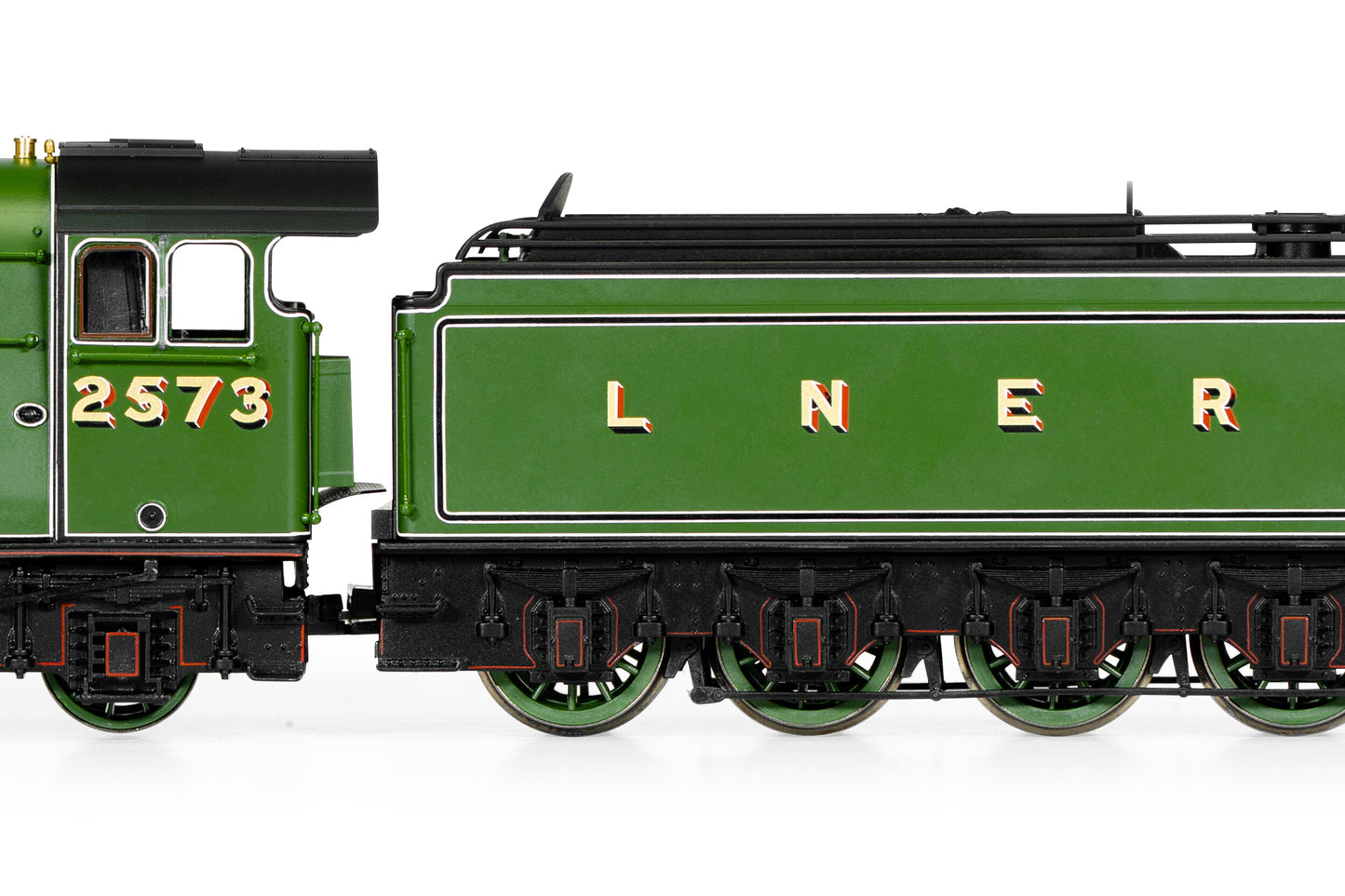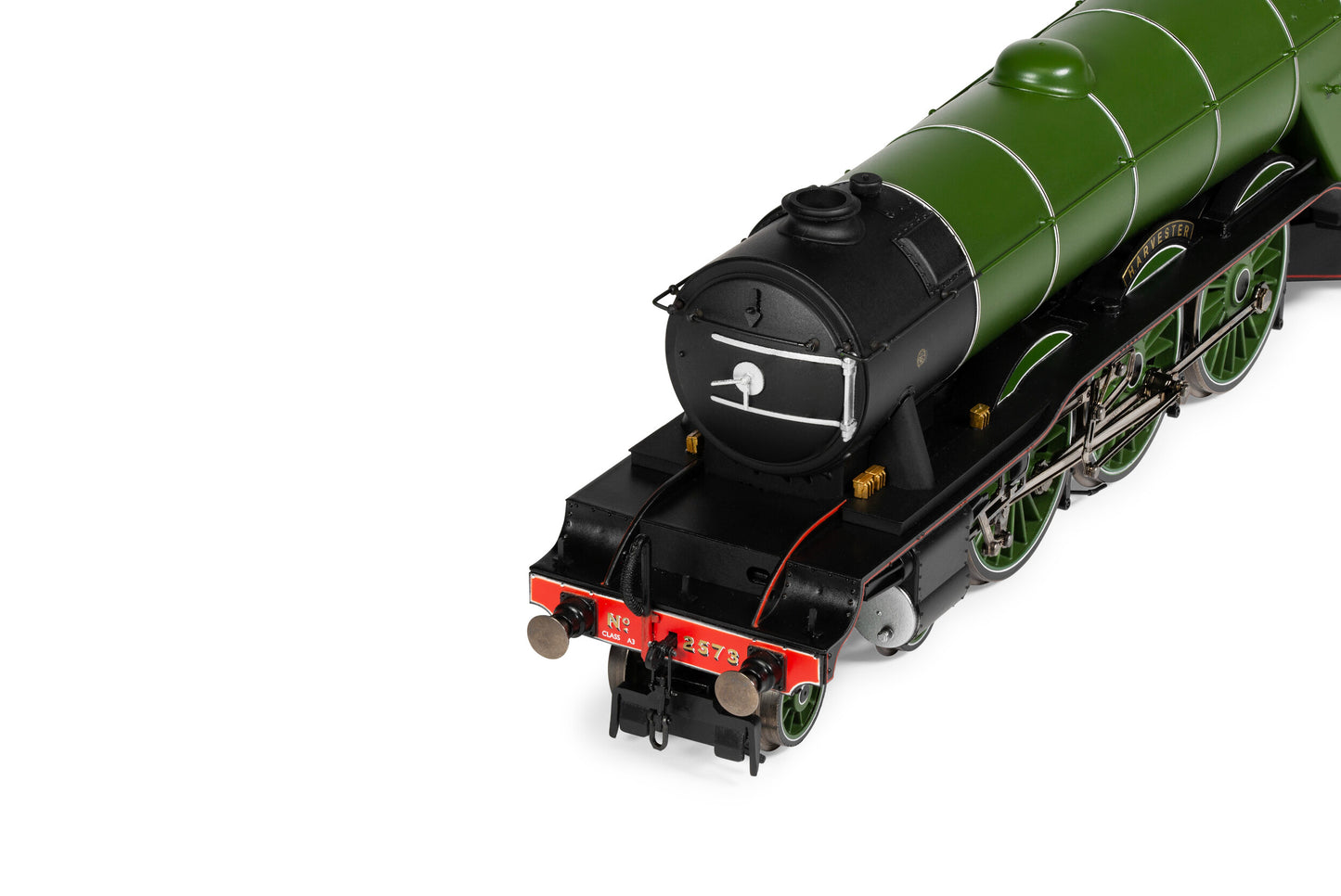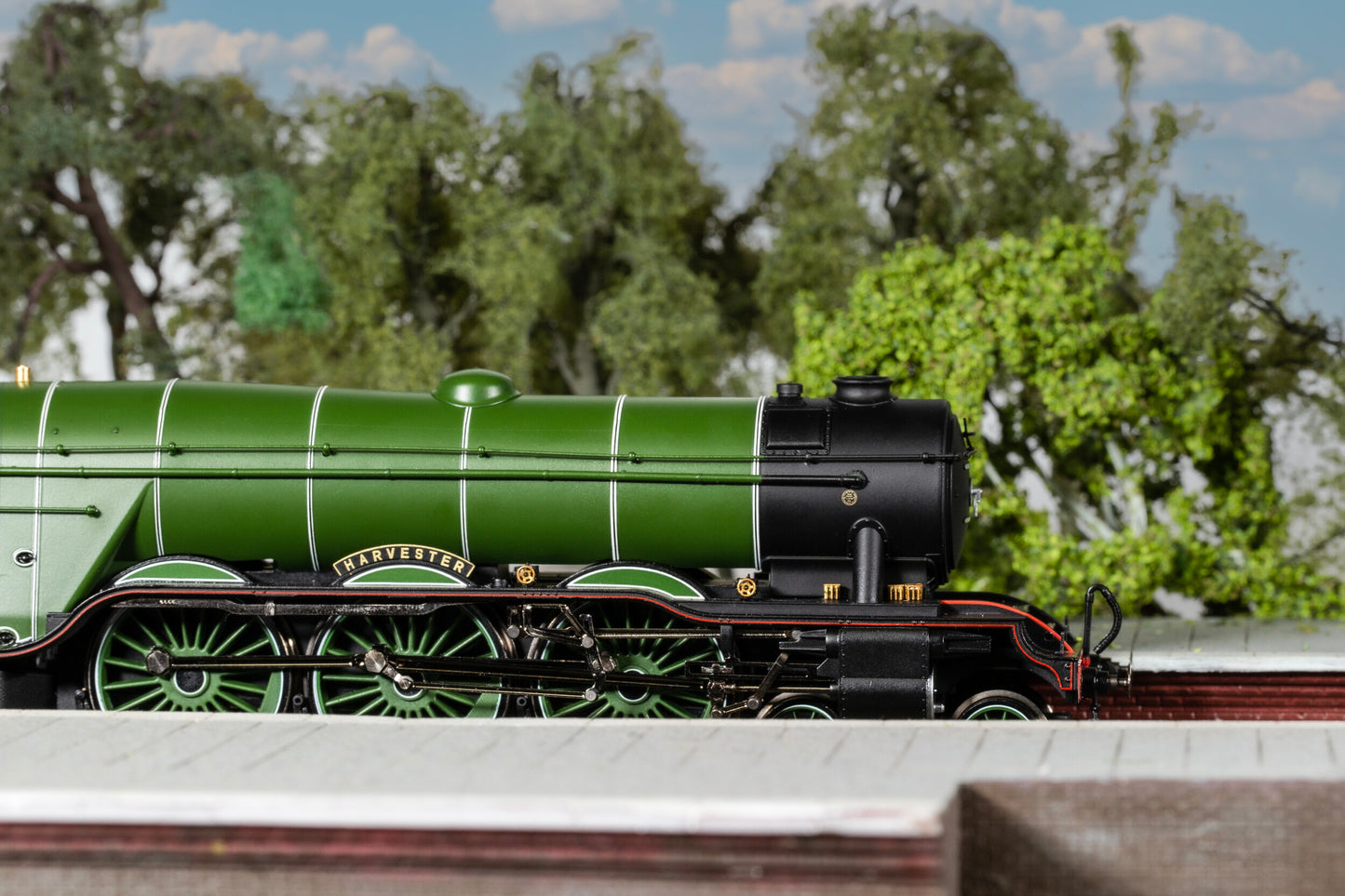SALE - Hornby R30216 LNER, A3 Class, No.2573 'Harvester' (diecast footplate and flickering firebox) - Era 3
SALE - Hornby R30216 LNER, A3 Class, No.2573 'Harvester' (diecast footplate and flickering firebox) - Era 3
Hornby
Couldn't load pickup availability
Hornby R30216 LNER, A3 Class, No.2573 'Harvester' (diecast footplate and flickering firebox) - Era 3
Product Info
Nigel Gresley’s A1 Pacific class emerged in the twilight years of the Great Northern Railway, a result of an idea that Gresley had nurtured since 1915. The First World War put his plans for new express passenger locomotives on hold but he applied his new three cylinder, conjugated valve gear designs to the O2 and K3 freight locomotives before returning to his plans for an express passenger Pacific in 1920, producing his 4-6-2 A1 design.
No.1470 ‘Great Northern’ was the first to enter service on the 11 April 1922 and Gresley confidently claimed that his A1 class could pull 600 ton trains which in September 1922 no.1471 ‘Sir Frederick Banbury’ did. Compared to the similar LNER design by Vincent Raven, Gresley’s A1 consumed less coal and water and was considered the better design, consequently the LNER chose the A1 design over the LNER A2.
The original eleven engines were built to the generous loading gauge of the GNR and after grouping in 1923 had to be modified to fit the loading gauge of the LNER with the chimney and dome both being reduced in height, plus the fitting of shorter safety valves.
The A1s quickly showed their ability to haul heavy loads on the East Coast Main Line but coal and water consumption was inefficient which was highlighted during the 1925 Great Western Exchange Trains with the A1s comparing unfavourably with the Castle class design. Consequent alterations to the steam lap settings and valve travel showed a reduction in coal consumption and this was adopted on all of the A1s by 1931. The piston valve rings were also replaced by the Knorr type piston valves which reduced steam loss.
Gresley had experimented with a different superheater to improve the A1s performance further but lacking significant results decided that he would increase the number of flues in the existing Robinson superheater. This coupled with an increase in boiler pressure led to improved performance and five of these new boilers were ordered in 1927 and were fitted to No.2544 ‘Lemberg’ and No.4480 ‘Enterprise’ later that year. Trials on these two A1s proved successful and so between 1927 and 1947 all of the A1s were rebuilt as Class A3 with the exception of No.4470 ‘Great Northern’ which was eventually rebuilt by Thompson in 1945 as Class A1/1.
Due to the wider header on the A3 boilers the ends projected slightly through the side of the smokebox and so cover plates were fitted to hide these projections becoming the main external distinguishing feature between the A3 and A1 locomotives. Locomotive No.2573 'Harvester' was built right in the middle of the classes construction timeline. A North British Loco Company built version of the A1 Class, the locomotive would enter service in October 1924.
The locomtoive would be rebuilt to the A3 Class with haste, emerging as the upgraded version in April 1928. The locomotive would be renumbered 74 under Edward Thompson before becoming BR engine number 60074 on Nationalisation. Withdrawn on the 8th April 1963, the locomotive would sadly be scrapped before the end of the year.












